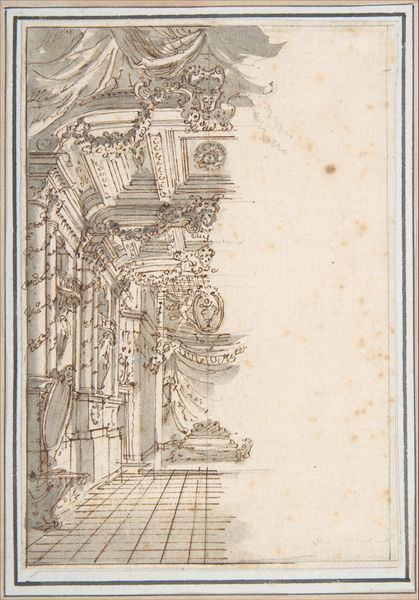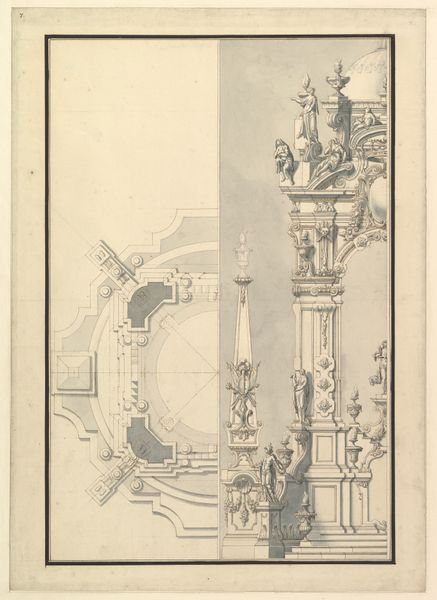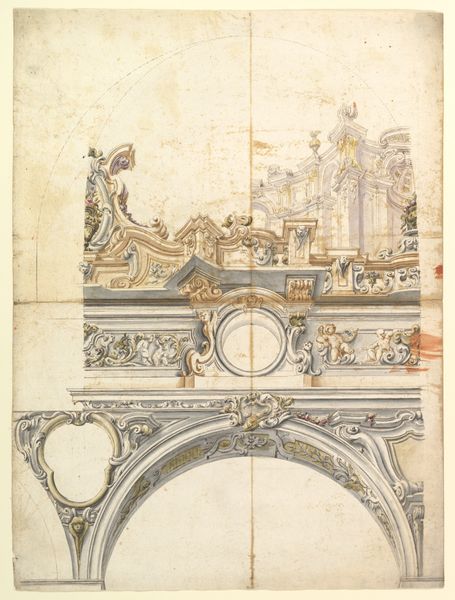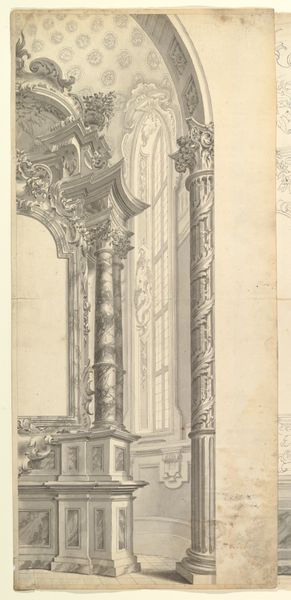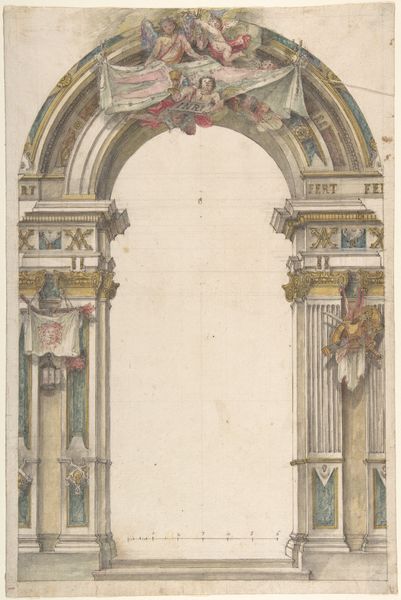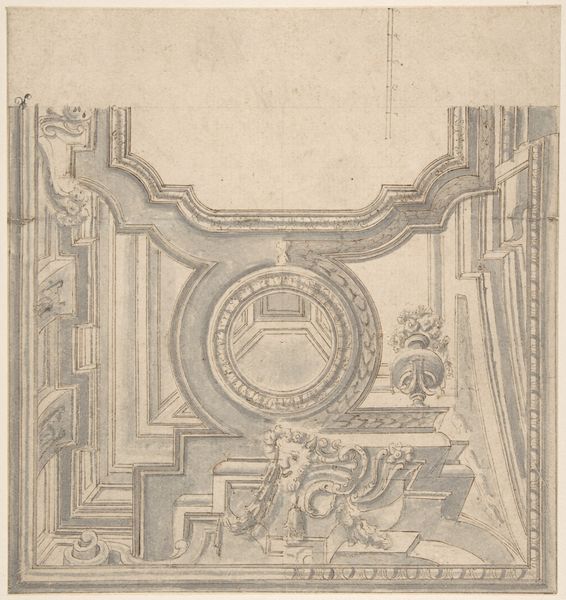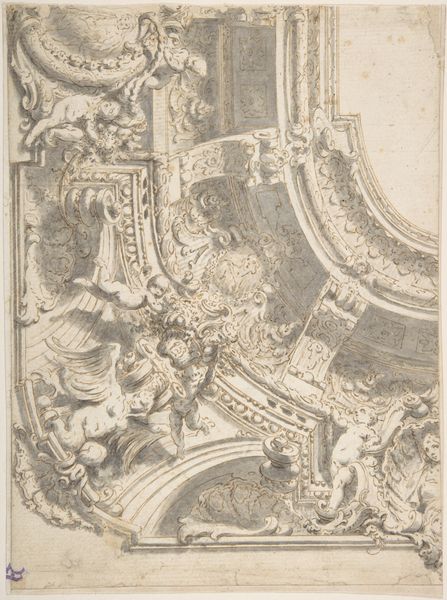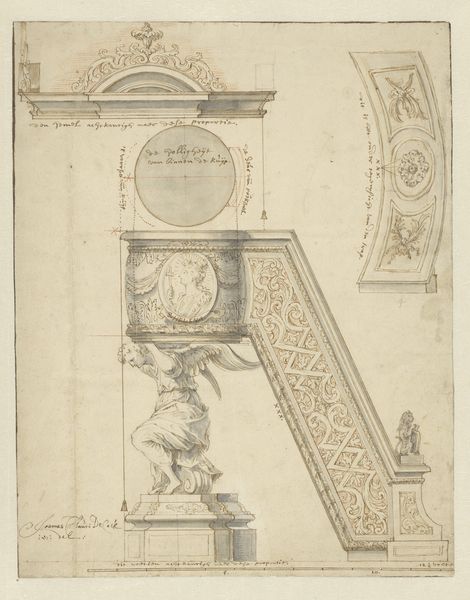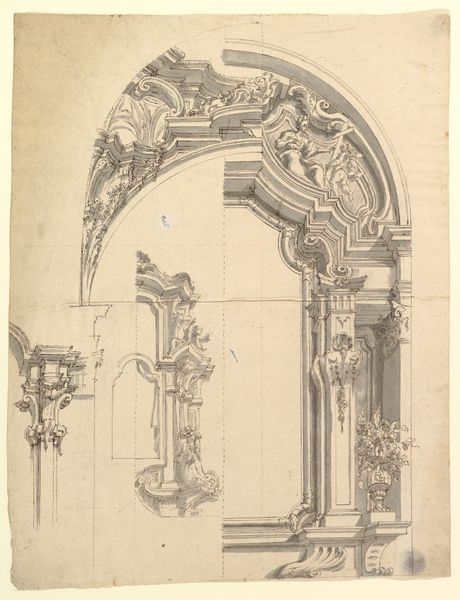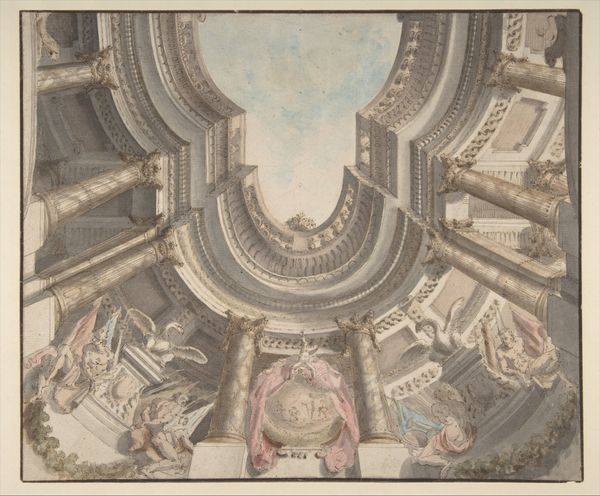
Design for Corner of Painting Ceiling with architectural perspective 1700 - 1780
0:00
0:00
drawing, coloured-pencil, print, watercolor, architecture
#
drawing
#
coloured-pencil
#
baroque
# print
#
perspective
#
watercolor
#
coloured pencil
#
architecture
Dimensions: sheet: 22 3/8 x 14 13/16 in. (56.9 x 37.7 cm)
Copyright: Public Domain
Editor: This is "Design for Corner of Painting Ceiling with architectural perspective," an undated piece from sometime between 1700 and 1780, located at the Met. The media includes drawing, colored pencil, print, and watercolor. The architect depicted and level of ornamentation is impressive! I'm wondering, what do you see in this piece? Curator: Well, consider the context: Baroque ceiling design was intensely laborious, demanding collaboration across numerous specialized crafts. The architectural framework, the sculpted ornamentation, and the painting itself, each requiring specific skills and resources. Think about the procurement of materials: the pigments, the stone, even the paper this design is rendered on. Editor: It sounds very capital intensive. Curator: Precisely! These grandiose ceilings speak volumes about patronage. They're a demonstration of wealth and power manifested through elaborate processes and the coordinated labor of many hands. And look at the rendering itself, the use of colored pencil and watercolor—not merely a sketch, but a presentation intended to impress a patron. What purpose does it serve? Editor: I guess it's not just about the end result, the impressive ceiling, but also about showcasing the complexity of the project, justifying the investment. A material manifestation of social standing! Curator: Exactly. The level of detail, even in a 'preparatory' sketch like this, underscores the value placed on skilled craftsmanship. Today, we might overlook the sheer amount of labor invested because we are so detached from it in art's modern, digitally-oriented reproduction methods. Editor: I’m understanding this less as simply art and more as a historical document related to material processes, a picture of supply chains, work management and labour conditions of the Baroque era. Curator: Indeed. Shifting our gaze from the aesthetic alone towards the material realities brings this design—and others like it—into sharper focus. Editor: This has made me consider things I normally wouldn't. I guess there is something beyond the immediate, pleasing aesthetics!
Comments
No comments
Be the first to comment and join the conversation on the ultimate creative platform.
